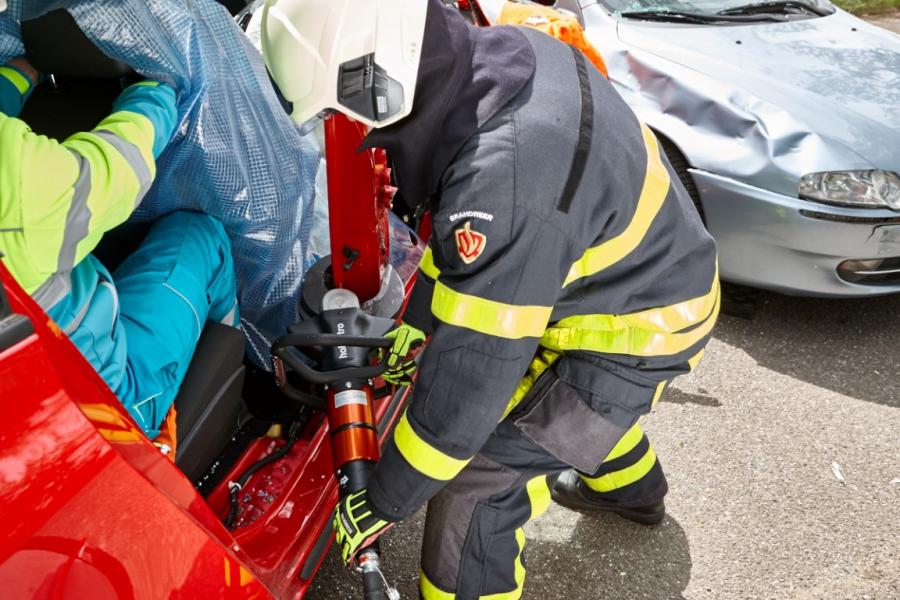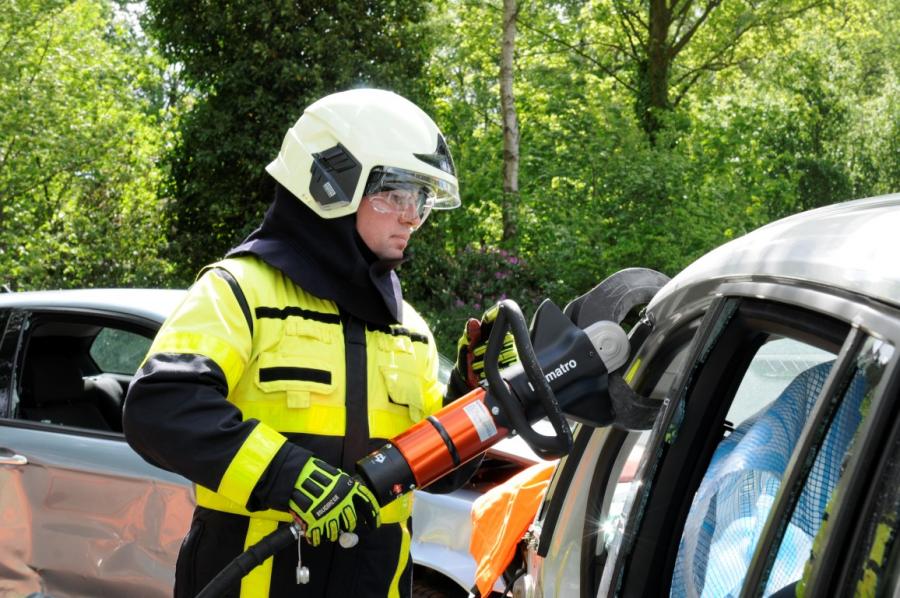Motorsports and extrication equipment
I am now half way through my first season as part of the British Touring Car Championship (BTCC) Extrication Team. The BTCC is the most popular motorsports in the UK and has a 60-year heritage. It has to be some of the most entertaining racing anywhere in the world as so called ‘push to pass’ is legal and therefore it provides some very ‘robust’ driving. I have quickly got myself a bit of a reputation as the extrication team has, so far, had its busiest season, possibly ever. Unfortunately, we have had some high-profile incidents and some pretty intense extrications and these incidents have made my inaugural season a real baptism of fire.
Extrication equipment review
Not content with just having me on the team, they quickly set me to work on reviewing extrication equipment and we immediately set to work making notes. Far from being a wish list, our aim is to have tools at our disposal that provide us with as many operational options as possible when we are deployed on track in the event of an incident. As there is a mixture of vehicle types (both open wheel racing and saloon cars) we need to ensure that our equipment and techniques are well thought out.
Inclined cutter
The first thing I wrote on our shopping list was an inclined cutter. There is absolutely nothing wrong with the ‘straight’ ones historically used, but having a cutter with inclined blades immediately offers some distinct advantages. Firstly, it is more ergonomic and allows the user to work at height and down low whilst keeping the control handle very close to a neutral, waist height position. This reduces the physical burden and makes extrication safer, easier and quicker.
Using an inclined cutter with its angled jaw reduces the physical burden when cutting high or low on the car.
In addition to ergonomics, an inclined cutter, by design, provides more working space. During operational use, there's less chance of the tool coming too close the structure of the vehicle, the patient or the ground. The 30-degree inclination of the blades in effect gives you a safety margin should the tool move during cutting operations. This is extremely useful in normal vehicle extrication where space it at a premium due to confined working space. However, this advantage becomes even more valuable in terms of motorsport as the BTCC cars have a very complex internal roll cage structure which further reduces working space during extrication. The roll cage completely surrounds the driver and is built to a specification laid out in the series guidelines. We do of course have knowledge of the construction as we regularly train and discuss extrication options.
 An inclined cutter also leaves more room between the tool and the car construction. This is even more practical in motorsports where the internal roll cage structure (see picture below) further reduces working space during extrication.
An inclined cutter also leaves more room between the tool and the car construction. This is even more practical in motorsports where the internal roll cage structure (see picture below) further reduces working space during extrication.

Major Incident
During qualifying at Croft Circuit on Saturday 10th June, an incident involving 11 cars resulted in 3 drivers being trapped and requiring technical extrication. The most complex of which was the Duo/Shredded Wheat Ford Focus (number 300) car of Luke Davenport. Luke had suffered 2 high speed side impacts, during which his car suffered massive intrusion. That being said, the crash structure and roll cage performed amazingly well which is a testament to the technical design and construction of the BTCC race cars. His extrication required a full side removal which involved 2 doors, B pillar and roll cage surrounding Luke’s seat. This was a technically challenging extrication which was performed exceedingly well, with some tremendous work from the technical and medical teams. I am happy to report that although Luke and the 2 other drives required hospital treatment, they are all now on the way to making a full recovery although Luke himself (and Jeff Smith in car number 55) will likely not race again this season due to their injuries.
Conclusion
Extrication from any vehicle (motorsports or otherwise) requires the rescuer to operate in restricted space and anything that can give you an advantage will make the process safer, easier and quicker. The inclined cutter provides this advantage when working in the confined space of a vehicle that has suffered intrusion and although it is a very simply concept, the operational impact is massive. On top of that, its ergonomic design reduces the physical burden when cutting at height and down low.
It is now the summer break so thankfully the extrication team are taking a well-earned rest. We return to action at Snetterton Circuit on July 29th and 30th. I sincerely hope the tools stay on the truck! Despite 25 years in technical rescue, motorsports rescue is a great new learning curve for me; every day is a day at school and the lesson here is that a simple idea can really make all the difference. Myself and the rest of the extrication and medical team would like to send our very best wishes to Luke Davenport, Jeff Smith and Aron Taylor-Smith and wish you all a very speedy recovery.
As ever, I welcome your comments.
Ian Dunbar
